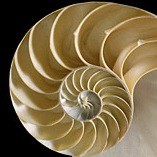The number 19 is, for a number, relatively famous (or perhaps infamous) as a Quranic number, but is mentioned in the Quran (74:30) and is a factor of the number of suras in the Quran, 114 = 6 x 19. The number 9.5 is not known to be significant, but revealed a significance while studying the metaphor of the chambered nautilus and its significance in the Quran. That is explained elsewhere on this blog, but I will flesh it out separately here. The numbers 9.5 and 19 are formative elements in the design of Quranic Architecture as discussed on this blog. In its calendric architecture, the Quran is divided into 12 months for each “year,” or each complete turn of the spiral. For 114 suras, there are 9.5 years, expressed by an equation: 114 ➗ 12 = 9.5. Then when we multiply 9.5 x 2 = 19, we can ask the question “is there any significance to this equation in terms of the meaning of the Quran?” And the answer is a resounding YES! Explained below:
Continue readingQuran and calendars
Placements of the Name Al-Rahman and Their Meaning
StandardHere we shall examine the placements of this exalted name in the Quran using the architectural “nautilus” chart, the possible meanings inherent in these placements, as well as some fascinating patterns. This also gives a sense of how the “nautilus chart” can indicate possible interpretations to increase our understanding of the Quran. Previously we examined the significance of the name Al-Rahman, as well as the name’s stunning relationship to perfect numbers. Here we show a surprising connection between this name and the sacred months, elucidating their sacred nature.
Continue readingWhat Are the Sacred Months in Islam, and Their Significance?
StandardThere are four sacred months in Islam. Sacredness is usually upheld by specific kinds of prohibition. In this case, fighting is prohibited in these four months. But also, it can be said “injustice in The 4 Sacred Months in Islam is the greatest sin.” Notably there is often much injustice and irreparable damage in war. Also, good deeds such as charity and kindness, piety expressed in mindfulness, prayer, and dhikr (remembering by invoking Allah) are especially encouraged during these months, with the promise of a greater reward. Three of these months – Thul-Qa’da, Thul-Hijja, and Muharram – are related to the Hajj pilgrimage, as they are adjacent months, with Thul-Hijja, the month of the Hajj, in the middle, surrounded by the other two months. This creates a protective barrier of time during which people can travel safely to and from the Hajj in peace. Before the modern era, the trip could take a month or more each way. Since the Hajj itself takes place between the 8th and 12th days of Thul-Hijja, safe travel time would be even longer. The fourth sacred month, Rajab, occurs six months after Muharram, thus preventing prolonged wars. Even a half-year’s fighting is therefore prohibited. No “forever wars” in Islam! Note also that these months form a {3,4} set: 3 adjacent months relating to Hajj, and one, the 4th, on the other side of the calendar, cutting the year in half. One can think of these months as a kind of sanctuary in time, a way to secure peace.
Continue readingWhy 114 Chambers?
StandardThe Quran exhibits its divine origin in not only the content or message, but also in its structure. First, it presents an idea for the overall “architecture” of the whole Quran arranged as a chambered nautilus shell where each chamber contains one sura. These chambers are arranged in a series of 12 suras, which also represent months, making each completed turn of the spiral a year. With each turn inward, the suras necessarily become smaller in order to “fit.” In fact, that was the original inspiration: the idea that a spiral would itself, as a shape, require the suras to become gradually and, as we approach the center, dramatically smaller. This shape is not perfect geometry; the Quran is a text, not a mathematical construct. But the whole is highly symbolic in amazing ways.
Continue reading



